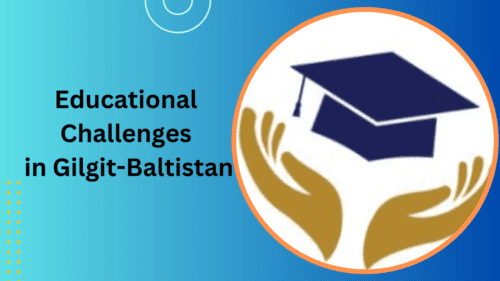
Educational Challenges in Gilgit Baltistan
Gilgit-Baltistan, a region in northern Pakistan, is known for its breathtaking landscapes and diverse cultures. Despite its natural beauty, the region faces numerous challenges in education. This article delves into the multifaceted challenges that hinder education development in Gilgit-Baltistan, exploring issues ranging from infrastructure to cultural barriers.

Geographical and Infrastructural Challenges:
One of the foremost challenges in Gilgit-Baltistan is its rugged and mountainous terrain. The problematic topography makes the construction of educational infrastructure a formidable task. Many areas need to be more inaccessible, hampering the establishment of schools and colleges. The lack of proper roads and transportation further exacerbates the problem, making it difficult for students and teachers to reach educational institutions.
Inadequate Educational Infrastructure:
Even in areas where schools exist, the infrastructure could be better. Many schools need more basic facilities such as classrooms, libraries, and laboratories. The absence of proper sanitation facilities and a conducive learning environment makes it challenging for students to focus on their studies.
Shortage of Qualified Teachers:
Gilgit-Baltistan grapples with a need for more qualified teachers. The remote locations and the limited availability of amenities hinder the recruitment and retention of skilled educators. As a result, students may not receive the quality education they need for their academic and personal development.
. Language Barriers:
Language diversity poses a significant challenge to education in Gilgit-Baltistan. The region is home to various linguistic groups, and the medium of instruction in schools may not align with the native languages spoken by the students. This creates a communication gap, hindering effective teaching and learning.
Cultural Barriers and Gender Disparities:
Cultural norms and traditions in Gilgit-Baltistan sometimes contribute to gender disparities in education. In certain areas, girls face social and cultural barriers that discourage them from attending school. Addressing these deep-rooted beliefs is crucial for promoting inclusive and equitable education in the region.
Limited Access to Higher Education:
While primary and secondary education face challenges, the situation is even more daunting in higher education. The scarcity of colleges and universities in Gilgit-Baltistan forces many students to move to other regions for higher studies, imposing additional financial burdens and cultural adjustments.
Economic Constraints:
The economic conditions in Gilgit-Baltistan also play a role in limiting educational opportunities. Many families struggle to afford the costs associated with education, including uniforms, books, and transportation. This economic barrier prevents a significant portion of the population from accessing quality education.
Lack of Technological Integration:
The rapid advancement of technology has transformed the landscape of education globally. However, in Gilgit-Baltistan, technology integration into the education system is limited. The lack of access to computers, the internet, and other digital resources hampers the development of digital literacy skills among students.
Climate Change Impacts:
The region is susceptible to the impacts of climate change, including natural disasters such as floods and landslides. These events can disrupt the regular functioning of schools and lead to the displacement of students and teachers, further disrupting the education system.
Political and Administrative Challenges:
The political status of Gilgit-Baltistan and its administrative structure also present challenges to the education sector. The region’s uncertain political status has implications for allocating resources and formulating education policies.
Closing Statement:
Addressing the educational challenges faced by the education sector in Gilgit-Baltistan requires a comprehensive and coordinated effort from the government, local communities, and various stakeholders. Initiatives to improve infrastructure, recruit and train qualified teachers, address cultural barriers, and promote inclusivity are essential for ensuring that the youth of Gilgit-Baltistan receive the education they deserve. The region can unlock its full educational potential and empower its future generations through concerted efforts and a sustained commitment to overcoming these challenges.









